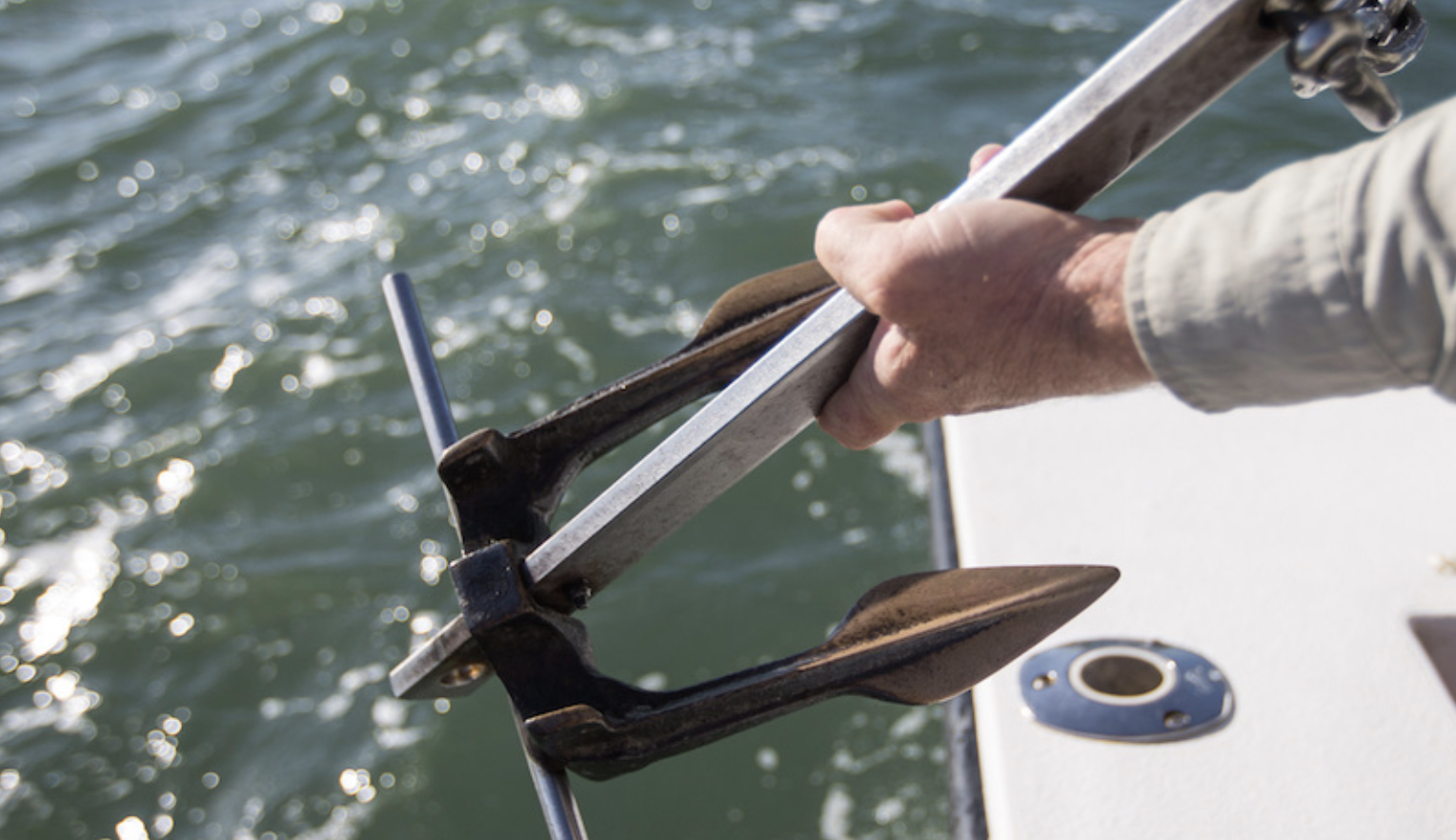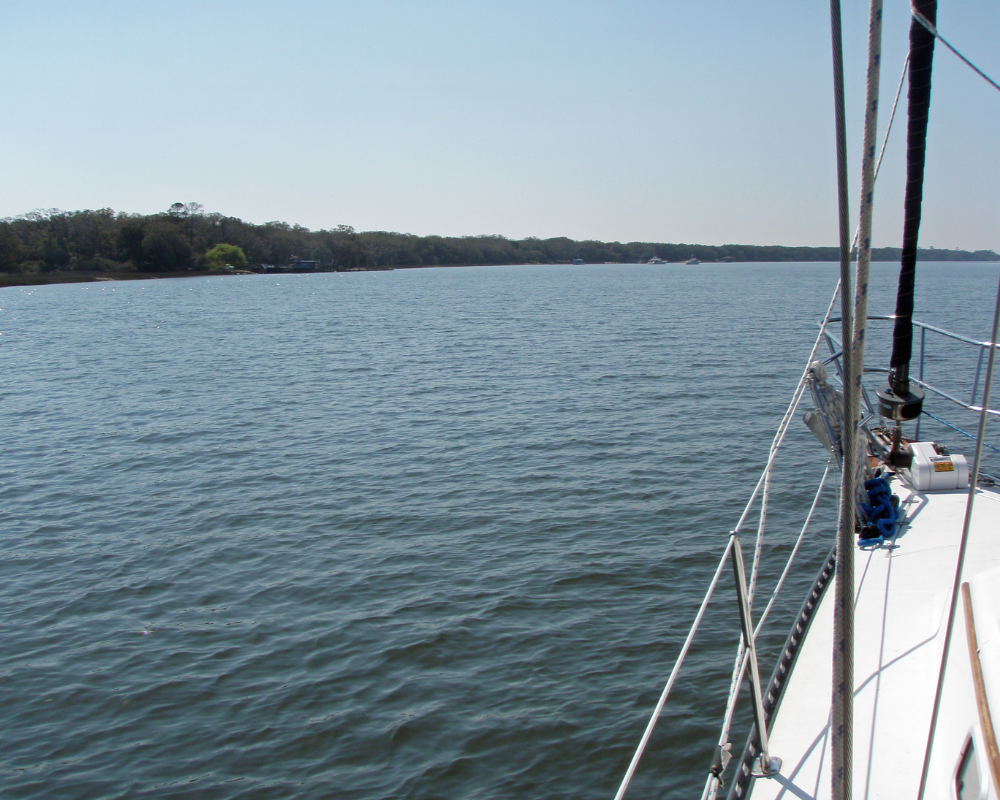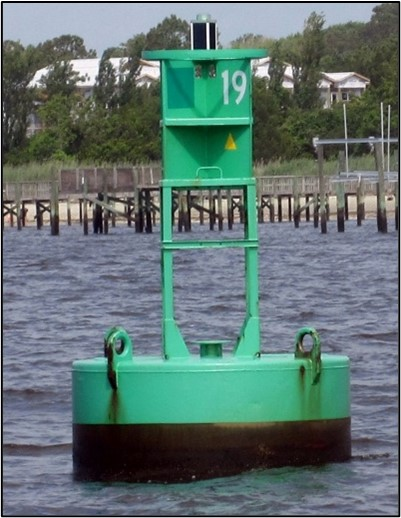Basic Knowledge for Cruising the ICW: Part 1
Bob Sherer, known as Bob423, has devoted a dedicated chapter in his ICW Cruising Guide to essential insights and practical advice for navigating the Intracoastal Waterway. Covering topics from dinghy protocol to adept boat handling in confined areas, here are his first 8 tips for cruising the ICW.
1. Port and Starboard
When at the helm facing forward, the right side of the boat is the starboard side and the left side is the port side. Why do boaters use such a "fancy" name for right and left? I was crew on a boat when someone in the cabin asked where the binoculars were stored. The helmsman shouted back, "It's on the left". The crew, facing the helmsman looked on his left and couldn't find them. After much back and forth, they figured they had better start using starboard and port! The crew on a boat don't always face the same way.
ATONs can be buoys, day beacons, lighthouses – anything used for marking a channel or hazard. ATONs marking a channel will be either red (known as a "nun") or green (known as a "can"). When proceeding south from Norfolk to Key West, you will pass red ATONs on your starboard side which will have a yellow triangle, and green ATONs on your port side which will have a yellow square
However, there are exceptions when traveling through some rivers where the color rule does not apply but in those cases, you still pass the ATONs with the yellow triangle on your starboard side and the squares on your port side when headed southward – even if the red and green colors are reversed (as they are between the Dismal Swamp and Elizabeth City, Cape Fear River, and other places).
The green 19 buoy shown in the picture has a yellow triangle so it should be honored as a red buoy and passed to starboard when heading southward on the ICW. As in the photo, the yellow markings are not always obvious. I circled the yellow triangle in the photo to point that out. When passing across inlets, be sure to look for the yellow squares and triangles to distinguish between ICW ATONs and those marking the inlet channel from the ocean.
2. Always Monitor Channel 16
When underway, always monitor channel 16. It's monitored by the Coast Guard and used for distress, safety, and for the initial contact of another boat or marina unless the marina posts a different channel on their website. The Coast Guard will issue navigation warnings and other alerts over this channel. Most modern VHF radios have a scan function. I scan 16, 13, and 9 at all times.
3. Slow Down When Being Overtaken by a Faster Boat
ICW courtesy is for the overtaking boat to hail the forward boat at low power on channel 16 or 13 (13 is preferred but it's not always monitored) and ask permission to pass on one side or the other, at which time the overtaken boat replies and slows to idle as the overtaking boat passes slowly by.
After 1000 miles of this, the same maneuver is often shortened to the forward boat noticing the aft boat which then slows down to idle, the aft boat then passes slowly on the forward boat's port side, all without use of the VHF (aka Bob423 pass). In our experience, about 95% of passes are silent and the overtaking boat passes slowly about 90% of the time. If the overtaken boat doesn't slow down to idle, the overtaking boat will often speed by, in our experience.
Tip: after the overtaking boat passes, the overtaken boat should move over across the wake, behind the boat so when he resumes normal speed, the increased wake that results will not wash over the overtaken boat. Don't forget to wave!
4. Always Ask for a Bridge Opening
Don't let this happen to you! There may be four boats ahead of you, and even though each one asked the bridge attendant for the next opening, you still need to call the attendant yourself and identify. Use channel 13 for bridge requests in Virginia and North Carolina. Use channel 9 in South Carolina, Georgia, and Florida. Repeat the name of the bridge three times followed by the name of your vessel and a request for an opening and wait for a response.
If you get no response, repeat. The bridge tender must know that you want to pass through. Make doubly sure that both sides of a bridge open – especially if the bridge has two lanes. A boat was docked next to us this fall that hit the second leaf of a double bridge when it was not apparent it was closed since it was approached around a curve. The bridge tender, in this case, did not announce that part of the second bridge would not open. Stay aware.
5. Dropping the Anchor
Well, you don't just drop the anchor. Pick a spot where you want to anchor and approach it from downwind or current, depending on relative strength. Then the one at the helm stops the boat and the one at the bow lays out the chain as the boat is backed. The goal is to lay the chain on the bottom in a line from the anchor (no piling up!), snub it at 70 ft or so, and let it out the rest of the way for the depth, usually 100 to 120 ft.
I use a minimum of 5:1 with an oversized anchor and 3/8-inch BBB chain. Then gently back the anchor in, not at high RPMs but enough to be sure the anchor has dug in. In soft mud, an initial hard set may not let the anchor settle into the mud for an eventual good set.

6. Picking up a Mooring or Weighing Anchor
The key to picking up a mooring or anchor is successful communication between the person on the bow who can see where the boat needs to go and the helmsman. For sailboats, there usually is a good line of sight between the helmsman and the person at the bow. For a powerboat, that may not be the case and wireless communication headsets may be needed. In weighing the anchor (raising the anchor), you want a vertical pull on the chain for the least strain on the windlass, and at the end to rotate the anchor out of the bottom.
If the helmsman has a clear line of sight to the bow, which is usually the case for a sailboat, then just use hand signals. They are very simple for us; I just point in the direction I want the bow to go. It's up to Ann to figure out how to make the boat go in that direction (ha!). If I want more thrust, I raise my palm; less thrust I lower my palm. Of course, the approach to picking up a mooring or weighing anchor is always into the wind and/or current, whichever is boss.
7. Dropping a Mooring
You would think this would be simple, just drop the mooring. That part is easy, but now you have to avoid the mooring line, other mooring balls, and moored boats in a crowded mooring field! When I drop the mooring line, I then continue standing at the bow and point at the mooring ball since Ann, at the helm, can't see it over the bow but now knows where it's at. I keep pointing at the ball until I'm sure Ann can see it herself.
In a busy mooring field, the helmsman is busy monitoring nearby boats or mooring balls that may be empty behind her or to the side and only has to glance at the bow person to know where the ball they just left is located. If the helmsman knows where the mooring ball just dropped is located, then the helmsman can find a path out of the mooring field.
8. Follow the Bends
The current through the ICW will usually cut a deeper path on the outside of curves rather than the inside. It is often tempting to "cut the corners" to take a more direct route between markers, but don't yield to the temptation unless you're in known deep waters. The deeper water is almost always on the outside of a curve in the ICW (never say always).



